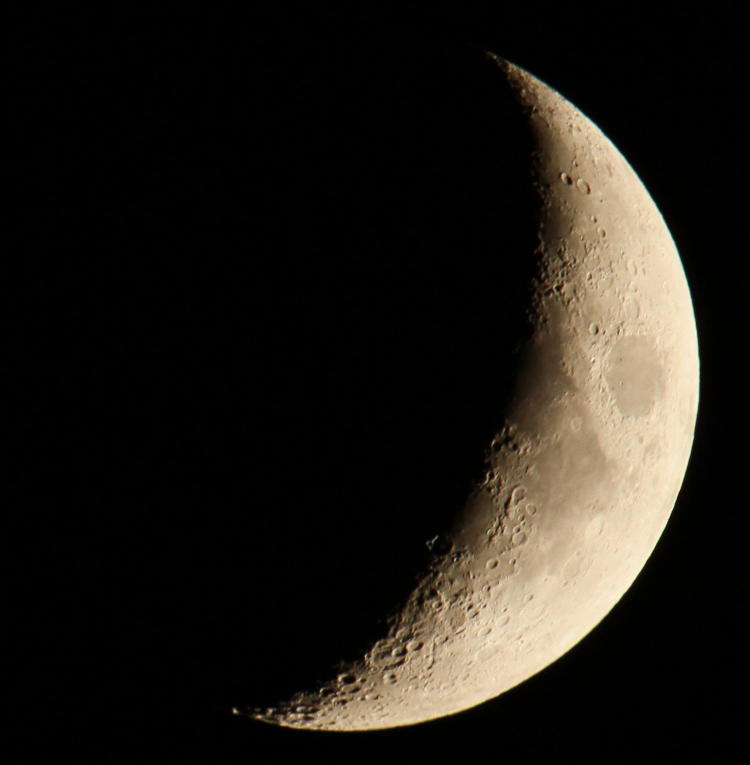Yes, it’s the autumnal equinox, that particular day when half of the moon is illuminated by the sun. Let’s have a look, shall we?

What, you were expecting to see a half-sphere, first quarter moon? I said half of it was illuminated, but that doesn’t mean we’re in a position to see it from Earth. I mean, half of the moon is illuminated when it’s full, and even when it’s new, just like half of the Earth is illuminated even when it’s night – it’s not our half, granted, but half.
So, yeah, the equinox has no affect whatsoever on the moon or how it appears to us, really, but this is what I’ve got today, having fired off a handful of frames before the moon disappeared behind the trees.
There’s a crater on the terminator that’s pretty distinctive and, like my attempts with Tycho, it looks like I caught sunrise on the central peak, something that was just barely visible in the viewfinder. Except it doesn’t have a central peak, and what I seem to have caught is the first vestiges of light on the shallow crater floor, because I’m pretty sure this is Fracastorius, old and flooded with lava flows from other impact events. That far wall with its tiny crater to the left, catching the sun away from the line of the terminator, showed very well in the viewfinder and became my target of interest. Looking at the images afterward, I was also intrigued by the single spot of light down at the very bottom of the moon, either a crater wall or a mountain catching the sun down near the south pole, but my attempts to find out what this was were thwarted by the very simple explanation that we don’t have enough detailed photos of that area; even the relief maps of the best source I use for plotting lunar features marks the region with ‘Unsatisfactory photography.’ Ah well…




















































